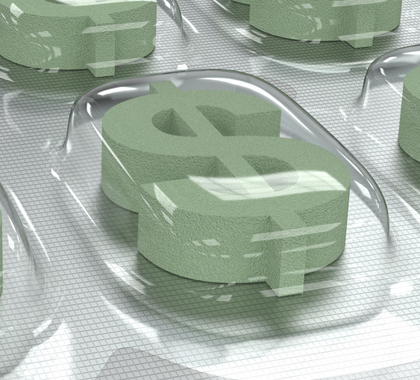Nearly 90 percent of the drugs Americans take are generics, which generally have modest prices.
Many of the remaining drugs have high price tags. About 1 percent are considered specialty drugs and can break the bank. President Donald Trump recently announced an executive order intended to reduce drug prices. The U.S. Food and Drug Administration (FDA) followed suit with its own draft proposal designed to make drugs more affordable.
Revising Part D
One Trump proposal is to revamp the way the government pays for drugs in the 430B discount program for facilities that treat low-income patients. Under the current rules, hospitals and clinics profit when they buy drugs at steep discounts and are reimbursed above their cost by the government, because seniors must pay their 20 percent share of the cost based on the higher retail price that Medicare reimburses. Trump proposes to base seniors’ cost-sharing on the discounted cost hospitals pay. The proposal would also require Medicare Part D drug plans to base seniors’ cost-sharing on net wholesale costs rather than on higher list or retail prices.
Basing cost-sharing on wholesale instead of retail prices would be unproductive. Although Trump’s proposal would lower costs for the government by paying hospitals less, it would have only a modest effect on what seniors pay. It should come as no surprise that firms that provide drugs—including pharmacies, hospitals, clinics, and drug plans—can procure drugs below retail price.
The proposal would also likely violate the noninterference clause of the federal law that created Medicare Part D. Medicare drug plans have been a great success due to private plan managers. It would be a mistake to jeopardize a successful program that has held drugs costs down.
Patent Protection
Trump also wants to renegotiate trade agreements to protect intellectual property rights of American drug makers. The idea is to make it harder for foreign governments to free-ride on U.S. drug patents. Foreign governments do by extorting huge discounts or compelling drug companies to license generic versions before their patents expire. Although not a bad idea, renegotiation is unlikely to have much effect on the prices Americans pay for drugs.
Trump also hopes to advance value-based drug pricing, which is what it sounds like: pricing based on a drug’s value. This too is a great idea, but it’s unlikely to lower prices for costly patented drugs. By design, patents convey monopoly power for a limited amount of time to reward firms for their investments.
Speeding Generics Approvals
FDA Commissioner Scott Gottlieb announced plans in May to speed generic drugs to market by preventing drug makers from gaming the generic approval process. Currently there is a backlog of several thousand generic drug applications awaiting approval. The process of approving a new generic can take more than two years. The FDA plans to give priority to drug applications where there is little or no competition. As it currently stands, the manufacturers of drugs with no competition have an incentive to raise prices aggressively, knowing it will be years before a new competitor can enter the market.
Gottlieb also hopes to speed generic approvals by stopping makers of branded drugs from blocking sales of their products to generic drug makers who need samples to prove bioequivalence.
Rebates, Copays
Lately, some politicians and activists have argued drug prices would be lower if drug plans were required to disclose what they pay for drugs. In addition, these advocates propose forcing plans to pass on to consumers more of the rebates and discounts plan managers obtain from drug manufacturers. This is like claiming food would be cheaper if grocers were required to disclose wholesale prices and provide more coupons. In the current system, the majority of drug rebates flow back to plan sponsors and thence to consumers anyway, often in the form of lower premiums.
Another proposal that would be bad for consumers in the long run is capping patient copays, as some states have done. Copays are used to steer health plan enrollees to preferred drugs such as low-cost generics. Copays also discourage excessive price hikes. Currently, drug makers know patients will balk and switch to another drug if their costs rise too high. With copays capped, these beneficial incentives vanish.
Competition Is Key
Another idea that won’t work is having the federal government negotiate the prices it pays for Medicare drugs. President Trump has backed this idea. Buying power, however, is not the same as bargaining power. The latter comes from the ability to walk away from a deal and refuse to buy a product. Medicare lacks the authority to refuse a given product if it deems the price is too high. As a result, Medicare has less bargaining power than the private firms who manage drug plans for Medicare Part D.
Patients increasingly experience sticker shock at the pharmacy counter because rising health plan deductibles have forced them to pay more of their drug costs out-of-pocket. This isn’t necessarily bad, because cost-sharing makes it harder for drug makers to jack up prices without anyone noticing.
One sure way to rein in high drug prices is to inject more competition into the market. The FDA should streamline the approval process for new drugs. Newer drugs would face numerous competitors if it didn’t require 12 years and more than $1 billion to bring a drug to market.
With increased competition, drug makers would find it more difficult to sustain high prices.
Devon M. Herrick, Ph.D. ([email protected]) is a health economist and policy advisor for The Heartland Institute.
Image via Thinkstock





